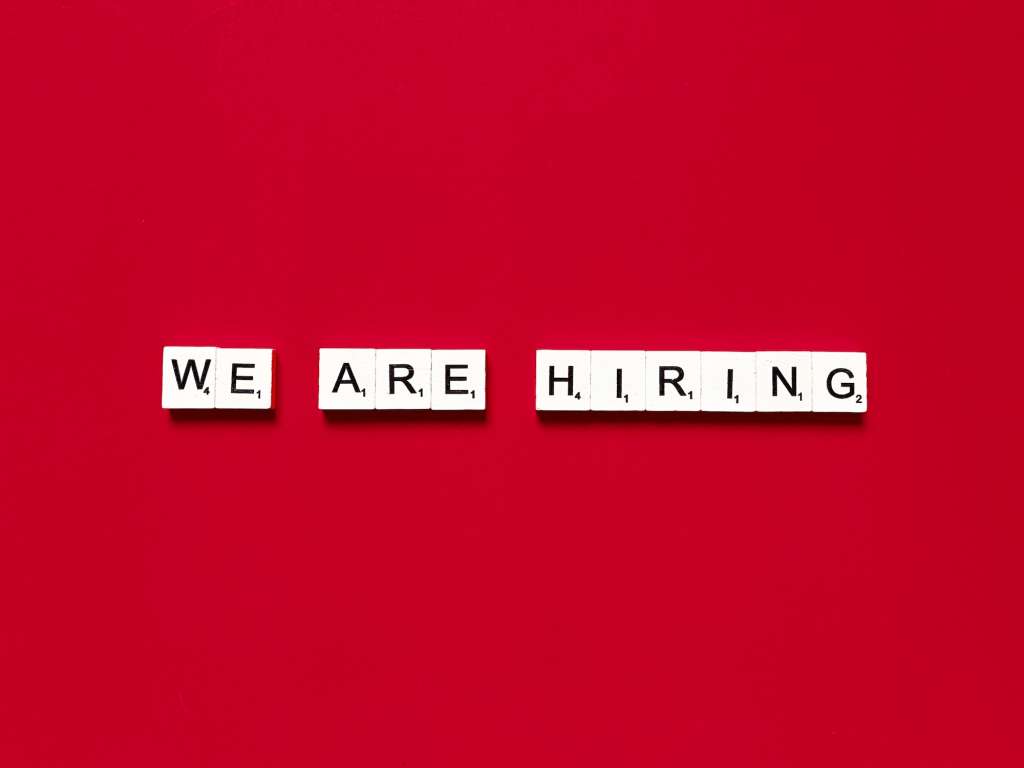Hey there, small business owners! I know managing payroll taxes, state taxes, and everything else that goes into hiring can feel overwhelming. As a fellow business owner, I get it! But finding the right candidate and bringing them to your team is essential. This blog will walk you through posting a job listing, reviewing applicants, answering interview questions, and hiring your ideal candidate. I aim to make the hiring process as smooth and stress-free as possible for busy bosses so you can get back to growing your business!
The first thing you need when bringing someone on board is an employee identification number to set them up on your payroll and properly withhold taxes from their paychecks. Don’t let all the paperwork scare you off, though – hiring employees also comes with many benefits, like delegating tasks or offering healthcare and retirement savings accounts.

How SwagMagic can help your brand?
- Bulk Buy & Save on your gifts!
- Curate Customized Swag Boxes!
- Launch Your Store for your employees!
- Secure Swag Storage with us!
Over this series of posts, I’ll walk through how to develop an interview process to really get to know your applicants, write appealing but legal job postings, and come up with the right mix of questions to find out if someone has both the hard and soft skills to thrive. That way, you get excited about helping that new hire assemble their first employee benefit enrollment forms because you’ll know they are the right candidate to join your workplace family!

Tips for Hiring Remote Employees
Getting the Word Out to Attract Your Ideal Candidate
The first step to recruiting top talent is crafting a compelling job posting to attract qualified applicants. Be clear about the role’s duties and qualifications so candidates can self-select. Post on high visibility sites like LinkedIn to reach passive candidates open to new roles. Referrals from your network can also yield great people who are not actively job searching. Promote your company culture, too so applicants get a feel for your vibe. You want to excite the right person about working for your innovative small business!
Interviews – Finding the Best Personality and Skill Fit
Interviews let you assess candidates’ skills and company culture fit. Ask behavioural questions to understand work styles and strengths. Also, evaluate their alignment with your mission and values. Check qualifications, too – verify education, professional experience and ID. Look beyond credentials, though; some of the best hires may lack traditional backgrounds but have the potential to thrive and grow. Keep a scorecard of impressions immediately after so you can compare objectively. Trust your judgment in selecting someone who will mesh well and have a rewarding tenure at your one-of-a-kind small business!
Legal Requirements to Know Before Hiring
Legal stuff isn’t the most exciting, but there are a few key compliance issues to tackle when bringing on an employee. You’ll need an Employer Identification Number (EIN) from the IRS to handle payroll and tax withholdings. Register with your state tax department to pay into disability and unemployment insurance funds on your new employee’s behalf. Additionally, follow the Department of Labor posting requirements about minimum wage, overtime pay, medical leave and anti-discrimination laws. I recommend touching base with an HR advisor if you need help ensuring you meet all regulations. Staying on top of the legal protections means your new hire feels supported from day one! And you can avoid any penalties down the road. Now, on to the fun part – welcome your new teammate aboard!
Phases, Steps, and Important Considerations Involved in the Employee Hiring Processes:
Phase 1: Preparing for Hiring
Before embarking on the journey of hiring new employees, it’s essential to lay a solid foundation. This phase sets the stage for the entire process.
1. Define Job Roles
Defining the roles you need to fill is the first step in the process. Carefully outline the positions, responsibilities, and qualifications required for each role.
2. Job Description
Craft detailed job descriptions that clearly articulate the positions’ expectations, responsibilities, and qualifications. This document serves as a vital point of reference for both candidates and the hiring team.
Curate the perfect box of handpicked gift they’ll love and send joy their way
3. Budgeting
Determining the appropriate salary range and benefits package is crucial for attracting qualified candidates. Research industry standards and your organization’s financial capabilities to arrive at competitive compensation.
4. Sourcing Strategies
Identify the most effective channels for reaching potential candidates. Leverage job boards, social media platforms, employee referrals, recruitment agencies, and your company’s website to cast a wide net.
5. Legal Compliance
Understanding and adhering to relevant employment laws and regulations ensures a fair and compliant hiring process. Equal opportunity, anti-discrimination, and privacy laws must be considered at every stage.
Phase 2: Recruitment and Screening
The recruitment phase involves actively seeking out and evaluating potential candidates based on their qualifications and suitability.
6. Resume Screening
Thoroughly review submitted resumes to shortlist candidates with the basic qualifications and experience required for the job.
7. Initial Contact
Reach out to shortlisted candidates to introduce your company and the role. This initial contact helps gauge their interest and availability.
8. Phone/Video Interviews
Conduct preliminary interviews over the phone or through video calls. Evaluate candidates’ communication skills, enthusiasm, and alignment with the role.
9. Assessment
Administer skills tests or assessments relevant to the position to evaluate candidates’ abilities and suitability objectively.
10. In-person Interviews
Invite promising candidates for in-person interviews to delve deeper into their qualifications, experience, and cultural fit. This is a chance for candidates to ask questions and for your team to assess their potential contributions.
Phase 3: Selection and Decision
This phase involves thorough evaluation and deciding the candidates who are the best fit for your organization.
11. Panel Interviews
Conduct interviews with multiple team members to gather diverse perspectives on the candidates and ensure a holistic assessment.
12. Reference Checks
Reach out to provided references to verify the candidate’s skills, work history, and performance. This step adds credibility to the information provided by the candidate.
13. Background Checks
Perform background checks to confirm the accuracy of the information and ensure the candidate meets security requirements.
14. Decision Making
Evaluate all available information, including interview performance, assessment results, reference checks, and cultural fit, to make an informed decision.
Phase 4: Onboarding
Once you’ve selected suitable candidates, onboarding ensures their smooth organizational transition.
15. Offer Letter
Extend a formal job offer to the selected candidate, outlining terms, conditions, and expectations.
16. Negotiation
Be open to negotiating terms, primarily salary and benefits, to reach a mutually satisfactory agreement.
17. Paperwork
Complete all necessary paperwork, including employment contracts, tax forms, and legal agreements.
18. Orientation
Provide a comprehensive orientation program to introduce new employees to the company’s culture, policies, and procedures.
19. Training
Design an onboarding plan with training sessions to help new employees become productive and confident in their roles.
Phase 5: Integration and Development
This phase focuses on the long-term success and growth of the employees within your organization.
20. Mentoring
Assign mentors to guide new employees, helping them integrate into the team and navigate their roles.
21. Feedback and Evaluation
Regularly provide feedback to employees and assess their progress. This ongoing dialogue fosters growth and mutual understanding.
22. Continuous Learning
Offer opportunities for professional development through workshops, courses, and mentorship programs to enhance skills and knowledge.
23. Career Path
Discuss potential career paths within the organization to motivate and retain talented employees.
24. Performance Appraisal
Conduct formal performance evaluations to review achievements, set new goals, and provide constructive feedback.
A well-structured hiring process is a cornerstone of organizational success. By following the outlined phases, steps, and considerations, you’ll be equipped to attract, select, and onboard the right employees who will contribute to your company’s growth and prosperity. Adaptability and continuous improvement are key to refining your hiring practices over time.

SwagMagic: An Unsung Hero in the Story of New Employee Hiring Needs
In the bustling world of corporate hiring, SwagMagic emerged as a game-changer. A leading Corporate Gifting and Swag company, SwagMagic wasn’t just about stylish merchandise; it was about transforming the hiring process. As organizations embarked on their search for exceptional talent, SwagMagic seamlessly integrated its services.
Picture this: A tech company gearing up to welcome new hires. SwagMagic stepped in with a personalized touch. They curated custom welcome kits, combining branded goodies and company essentials. This thoughtful gesture eased the onboarding transition and showcased the company’s culture and values.

But SwagMagic’s innovation didn’t stop there. They recognized the challenge of virtual interviews. To alleviate the disconnect, they introduced Virtual Swag Kits. These kits contained company-branded swag, gourmet snacks, and useful gadgets, creating a tangible connection in the digital realm.
Feedback from HR managers was enthusiastic. SwagMagic’s offerings streamline the hiring process and enhance the candidate experience. New hires felt valued, connected, and excited to contribute.
SwagMagic wasn’t just in the business of gifts; it was in the business of building bridges between organizations and talent. With their creative solutions, they revolutionized hiring, making it not just efficient but also unforgettable.
When should I be ready to hire my first employee?
Know the legal and financial responsibilities, have a steady revenue stream to afford payroll long-term, and reach capacity handling current workloads alone. If you’re overwhelmed, losing business from lack of bandwidth, and financially able, it’s likely time to expand your team!
What makes a good job description?
Clearly outline day-to-day duties, skills and education required, physical workplace expectations, salary range and benefits. Detailing the role and qualifications precisely attracts candidates that closely match what you’re seeking and weeds out less suitable applicants.
What should I include in the job offer?
The written offer formalizes the verbal offer you already extended. It specifies the position title, compensation amount and structure (salary or hourly wage, raises, and bonuses), employee benefits, expected start date, work schedule, and other agreed-upon details of employment that define the role.
What benefits should I consider providing when I hire employees?
Legally required benefits include workers’ compensation, unemployment, disability insurance, and social security contributions. Expected additional benefits to attract talent include health insurance, retirement contributions, paid time off and parental leave. Consider what’s feasible for your budget today and what can be added over time.
What mistakes should you avoid when you hire your first employee?
Moving too quickly through screening, lackadaisical reference and background checks, and not verifying past employment and eligibility to work. Rushing hiring often leads to toxic culture fit or subpar performers burdening current staff. Slow down! Find the right match who excels at the role and energizes your workplace dynamic.
When do I need to pay employees?
Federal and state laws require employers to pay employees regularly. Employees must be paid at least twice per month on designated paydays. Paystubs should clearly show gross wages, any deductions, and net pay.
Why do I need to run a background check?
Conducting employment background checks helps verify applicant information and check for any red flags. This protects your business, employees, and customers. Background checks are a standard pre-employment screening process.
What employee benefits should I offer?
Some expected employee benefits include health insurance, retirement plans, paid time off, flexible scheduling, professional development stipends, gym memberships, and more. The right benefits can help attract and retain top talent.
How can I create a good company culture?
Encourage open communication, transparency from leadership, opportunities for growth, work-life balance policies, inclusive diversity practices, and employee appreciation and recognition programs. Building a positive culture leads to higher employee satisfaction.
What state labor laws apply to my business?
Be aware of your state’s specific employment regulations around hiring practices, minimum wage, overtime pay, meal and rest breaks, paid sick leave, employee record keeping, termination procedures, and more. Staying compliant protects your business from penalties.
What should I consider when making a hiring decision?
Carefully examine the applicant’s qualifications, experience, technical skills, cultural background, personality fit, communication abilities, and more. Check references. Ensure hiring aligns with your business needs and budget. Trust your instincts if you have a good feeling about a candidate.

Leave a Comment